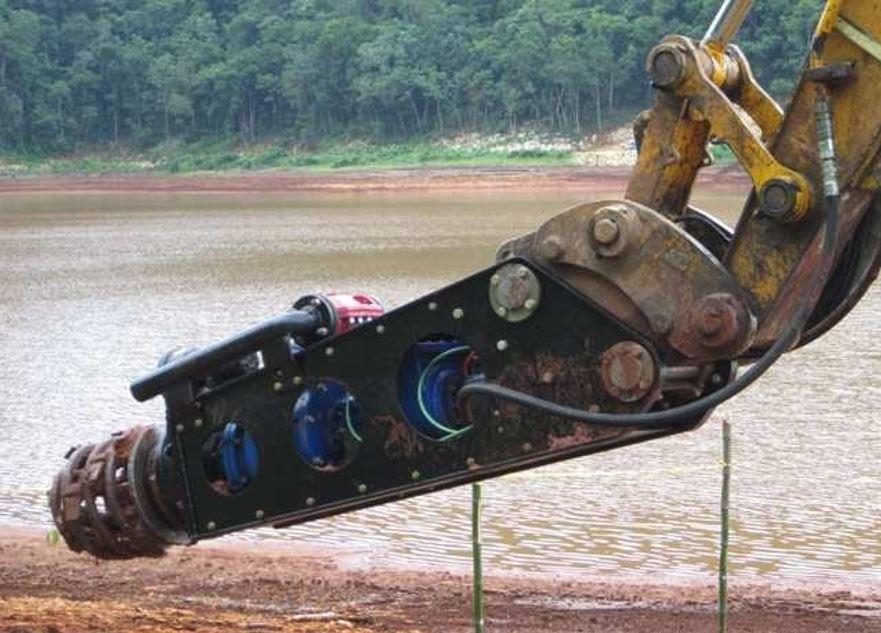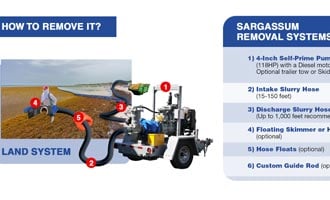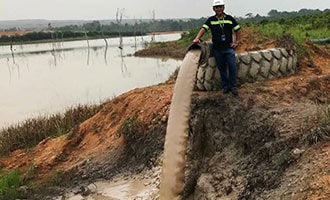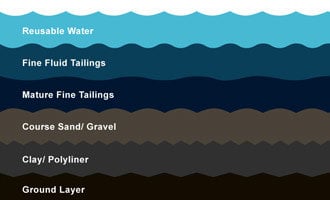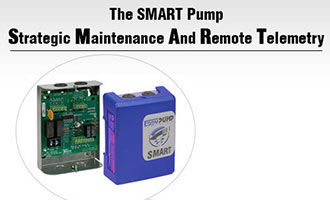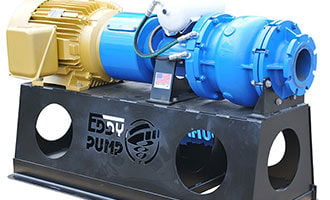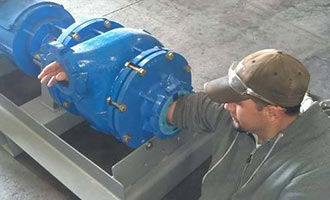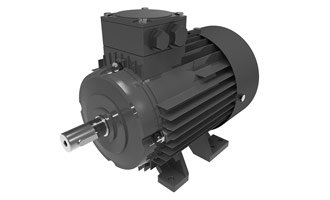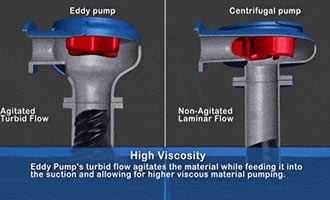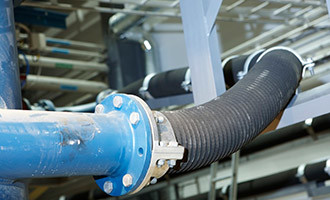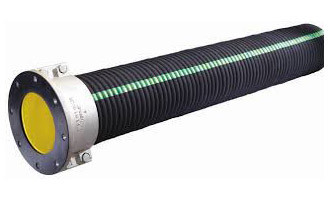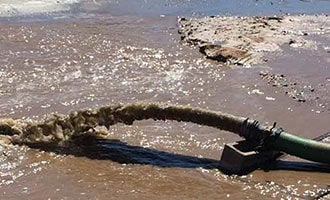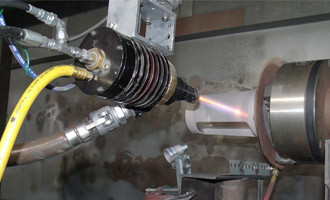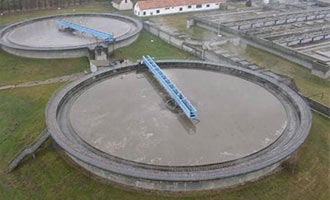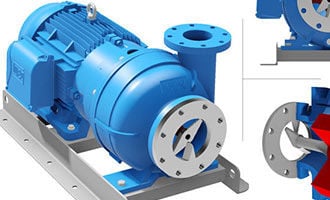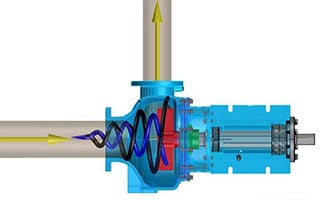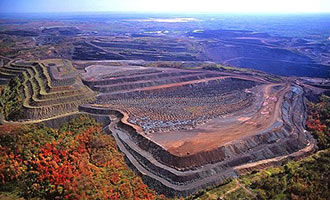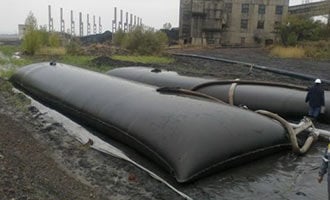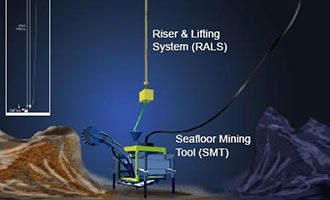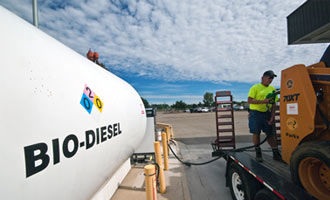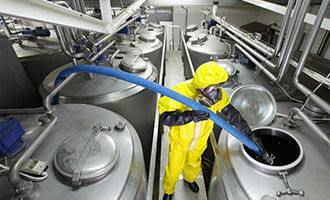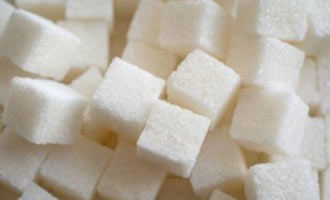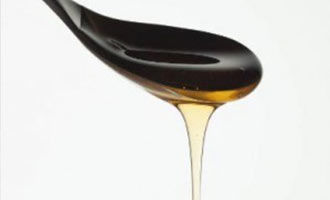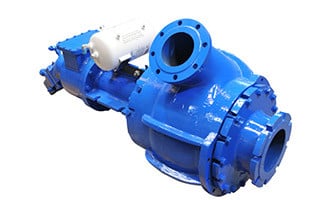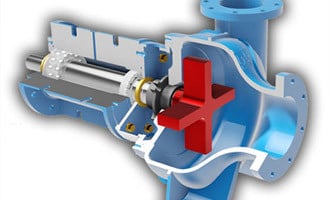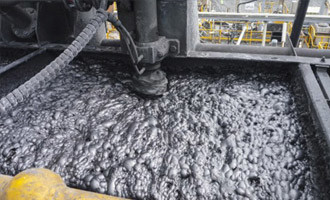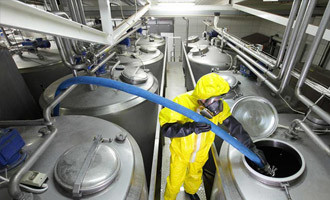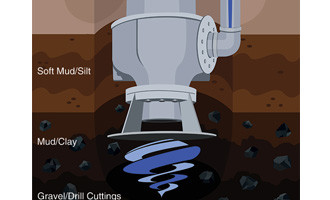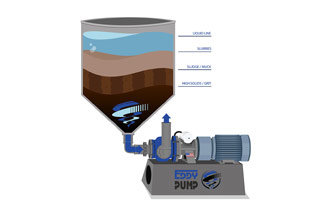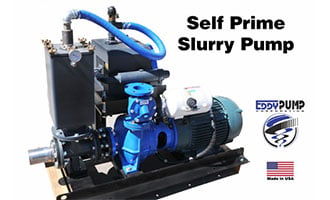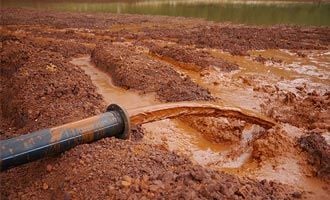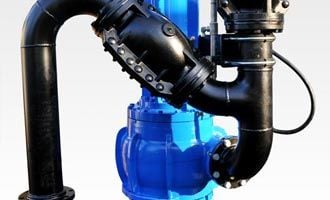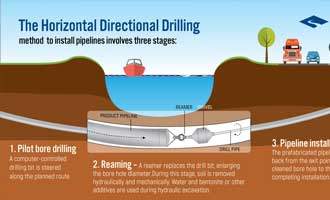Types of Mine Waste and Disposal Methods
Learn about different types of mine waste and how it is stored and handled after the mining operation has completed. Browse Our Mining PumpsRequest PricingIt’s no secret that mining can produce a lot of waste. This is evident by catching a glimpse of any mining operation and the scale at which they operate. In fact, in most cases, you’ll likely only notice the actual mine waste because the majority of the actual operation is occurring underground. Mine wastes found in quarry lagoons can be problematic due to the fact they contain hazardous material that can be released into the environment if not properly handled. Some of these hazardous materials include heavy metals, metalloids, radioactive waste, acidic water, and process chemicals.
The EDDY Pump Corporation offers a number of premier products that are ideally suited for the mining industry. Originating in 1984, EDDY Pump has a long history and many years of experience in mining and understands the harsh demands this industry can put on mining products. EDDY Pump products are constructed using the highest quality materials and built to handle extreme conditions on a constant basis.
This article includes:
- Rock or Solid Mine Waste Pumping
- Liquid Mine Waste Pumping
- Mine Waste Disposal Equipment
- Mine Waste Management
- Lasting Environmental Impact
- EDDY Products – Best Applications and Industries Most Served https://eddypump.com/applications/
Watch the video below to discover how the EDDY Pump excels at moving high viscosity materials commonly found in mining operations.
Rock or Solid Mine Waste
Open pit mining has several stages of waste. First, to access the actual seams or veins of ore, the top layers of rock or overburden must be removed. Once the overburden has been removed, the seams can be extracted. When extracting the seams, there is additional waste rock that must be separated from the ore. This additional waste rock is called gangue. When the gangue is processed (finely ground) more waste material is produced which is called mine tailings. Mine tailings is another waste material that must be removed from the site.
Open pit mining has several stages of waste. First, to access the actual seams or veins of ore, the top layers of rock, or overburden, must be removed. Once the overburden has been removed, the seams can be extracted. When extracting the seams, the additional waste rock will be removed to get to the actual ore, called gangue. Then, as the material is processed and finely ground, even more, waste, called mine tailings, will need to be removed from the site.
Overburden -> Gangue -> Tailings
Overburden
Waste rock or overburden refers to the often large mass of initial soil and rock that is removed to get to the valuable mineral deposits. Typically, for every ton of ore that is mined, 5 tons of overburden is displaced. Overburden is not subjected to any chemical processes but must be removed to access the ore underneath. Overburden is managed by using it to resurface previously mined areas to revegetate and restore them to their original appearance prior to being mined.
Gangue
Gangue is the worthless rock or material that is closely mixed with the valuable material to be processed. The separation of minerals from gangue is called mineral processing. Oftentimes, inefficient processing methods can produce gangue that still holds an ample amount of valuable minerals. As values of minerals increase, it can even be profitable to reprocess gangue to extract additional minerals that may have been missed during the first processing.
Mine Tailings
Tailings are finely ground rocks and other mineral waste as a result of mineral processing. Due to the way minerals are processed, tailings can contain concentrations of processing chemicals. This can make mine tailings an environmental concern, so proper transportation and disposal are crucial. Consequently, the next step is to pump mine tailings away with slurry pumps into tailings ponds. Tailings ponds are sedimentation holding ponds enclosed by dams and liners to capture and store the waste.
Liquid Mine Waste
Mine Water
Mine water is produced in a few different ways at mine sites and can vary in levels of contamination. Water exposed to mining processes is also often acidic and can contaminate local water sources in a process called acid mine drainage (AMD) or acid rock drainage (ARD). Acid mine drainage is a heavy contributor to pollution of surface water across the globe. AMD is primarily caused when water flows over the sulfide-heavy material, forming an acidic solution. Water at mine sites is usually heavily monitored and management strategies are used to not only reduce the amount of mine water produced but also to treat the water before it is released back into the environment.
Water Treatment Sludge
Sludge is produced at some mine sites and is similar to mine wastewater, but has the additions of solids and processing chemicals. These additions turn the water into a more viscous sludge which can then be pumped away from the site. Since the majority of sludge has little economic value, it’s essentially handled as waste. In extreme cases where the sludge is rich in harmful or radioactive material, it may be classified as hazardous waste and require special handling and disposal methods.
Water Contaminated by Acid Rock Drainage

Mine Tailings Storage Site
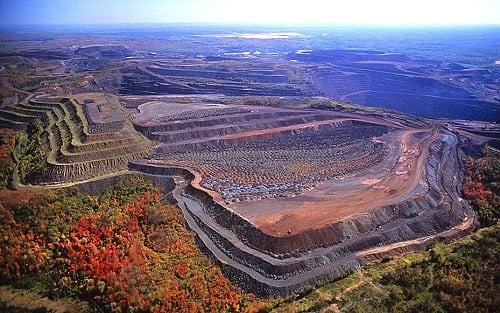
Mine Waste Disposal Equipment
EDDY Pump partnered with the UAT Group and can now offer a complete dredging solution for effective slurry, sludge, and solids removal, the Dredge Sled. With the latest technology, the Dredge Sled is a cost-effective solution for your pond, lagoon, canal, mine tailings pond, and settling tank cleaning.
The Dredge Sled is a simple, efficient, and easy-to-use alternative compared to more complicated heavy-duty dredging equipment. The best solution for shallow pond or lagoon dredging.
Mine Waste Management
Waste management techniques employed by mining companies are routinely under intense scrutiny from local governments and the general public. Improper disposal methods and the resulting environmental damages have plagued the history of the mining industry. These actions have left a negative stigma associated with mining and associated waste materials. For this reason, many countries now require miners to prepare a complete mine waste storage proposal before a mining permit will be granted. To ensure long-term storage stability and prevent violating any regulations, mine waste is carefully managed at every step of the process.
The volume of waste from mining operations is high, and due to the large volumes of waste, environmental concerns will inevitably arise. In response, mining engineers have developed clever ways of waste management, making the mining industry one of the few that actively recycle their own waste. Overburden is used for reprocessing, contouring land, and as a construction aggregate for buildings and roads. Mine tailings are reused for producing clay, tiles, glass, and concrete. Mine water is treated and then used for dust and particulate suppression, agricultural/industrial use, and as a coolant.
Despite numerous recycling methods, the majority of mine waste is still stored in facilities or waste sites. The long-term storage of these facilities has become an important topic in modern mine closures. Various regulations have come to pass that require the waste to be stable for years, sometimes centuries. This requires engineers to develop storage methods to withstand catastrophic events like floods, heavy storms, and earthquakes.
Lasting Environmental Impact
The main environmental impacts of mining waste include the loss of land following its conversion to a tailings pond or waste storage area and the introduction of acidic runoff or other contaminated sediments into the local environment. The specific environmental impact of waste depends heavily on the material composition, type of ore mined, and the way the ore is processed. For example, gangue and tailings from mining heavy metals could have a high concentration of sulfides which could cause acid rock drainage to occur. Due to the many variables, mining operations will need to develop their own methods of waste disposal in accordance with regulations pertaining to the different types of waste they produce. However, it is worth noting that a large portion of mining waste is benign to the environment and is routinely used to revegetate or contour the land when the mining operation has been completed.
Sales and Selection Help
Let our sales or engineering support help in your pump selection
Call 619-404-1916
Unparallelled Satisfaction – EDDY TOUGH!
Another very important differentiator between the EDDY Pump and the AODD pump is that the EDDY Pump can pass extremely large solids; much larger solids than an AODD pump. Dimensionally, the internal liquid housing is sized such that an EDDY Pump can pass solids that are almost the size of the inlet and discharge ports of the pump. Along with this, the EDDY Pump can also pump media that contains longer stringy types of materials – this is something that AODD pumps cannot transfer. EXAMPLE, a 6-inch EDDY Pump can pass a 5.5 inch solid, which no other pump can do.
As you can see, the EDDY Pump is the smarter choice from performance, reliability, greater range of pumping solids-laden materials, and economical perspective than an AODD pump. When trying to make the challenging decision on which pump to choose for your demanding application, CHOOSE AN EDDY PUMP!
Best Applications – Industries Most Served
The EDDY Pump Corporation is a premier manufacturer of pumping and dredging equipment. If you are pumping or dredging slurry, high solids, extremely viscous material, paste, high abrasives (sand & gravel), and material filled with solids, then you found the best-suited product for the job. Go to: https://eddypump.com/ or Call Us!
Mining, Fly Ash, Coal Ash, Oil, Fracking, Gas, Wastewater, Pulp and Paper, Chemical, Energy, Water Municipalities, Irrigation, and Dredging Companies. For Access to Complete Product Line Go to: https://eddypump.com/products/
Related Products
HD (Heavy Duty) Slurry Pumps
Why EDDY Pumps Are Better – Highlights
This video shows how EDDY Pump transports high slurry and abrasive materials. Featured dredge pump equipment includes the Remote Operated Subdredge, Diver Operated Pump and a Excavator Attachment Dredge Pump.
Why EDDY Pumps Are Better - Highlights
This video shows how EDDY Pump transports high slurry and abrasive materials. Featured dredge pump equipment includes the Remote Operated Subdredge, Diver Operated Pump and a Excavator Attachment Dredge Pump.

